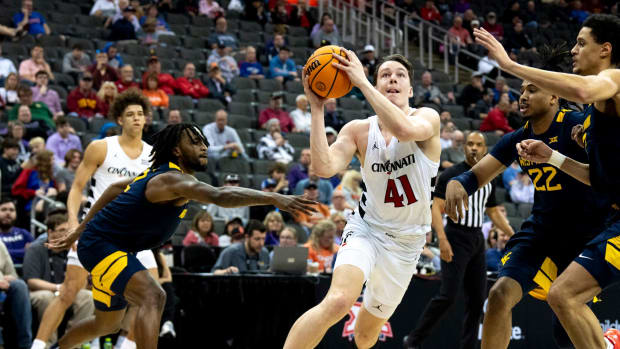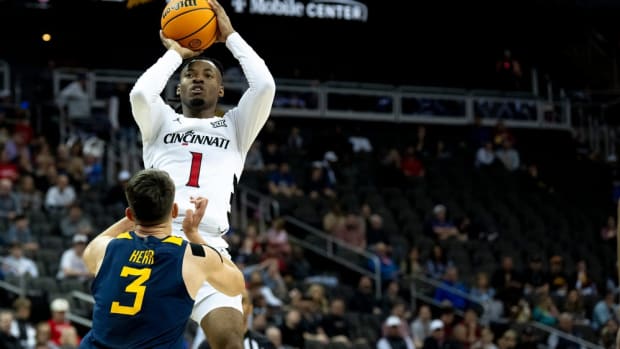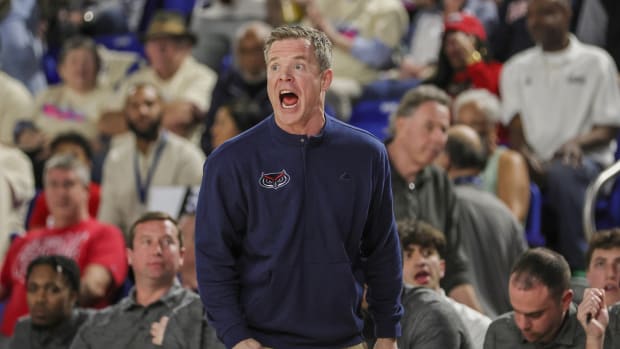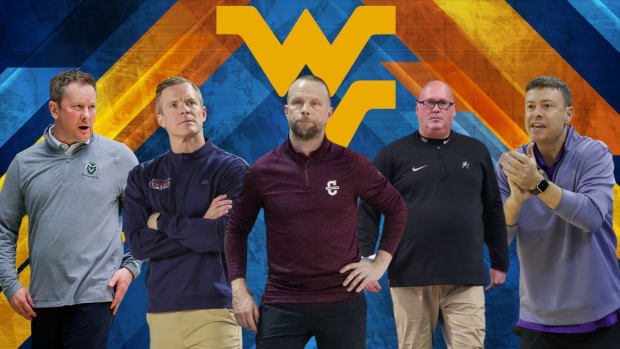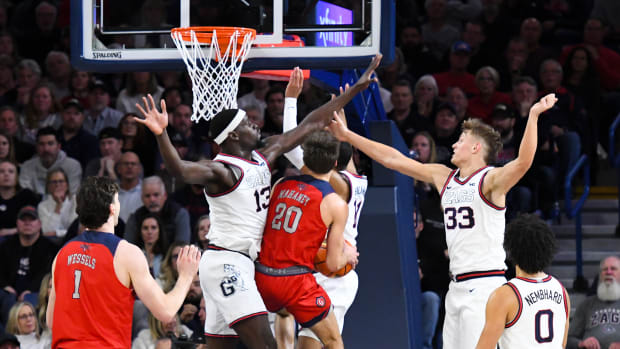The app for that: How simple Apple Notes became a major player in college sports recruiting
\n\n
Jake Bentley needed to make an important announcement. It was late March, and he'd reached a decision that college football fans across the country were eagerly anticipating. Bentley had previously identified Alabama, LSU, Miami, South Carolina and Stanford as his top schools, but only one of them would land a verbal commitment from the elite quarterback prospect.
On March 24, Bentley made the call, declaring he would attend South Carolina. A couple of weeks later, he released more news: He would be joining the Gamecocks this summer, in a reclassification from the class of 2017 to 2016.
The implications of Bentley's announcements remain to be seen, but the manner in which they were made public were the epitome of simplicity. There was no elaborate video, no news outlet reporting them on its airwaves. All Bentley needed was his Twitter account, two words, a couple of emojis and a hashtag, becausein both cases he attached images bearing blocks of text—both of them set against a light gray background.
The images probably struck a chord with anyone who keeps tabs on recruiting: screen shots of the Apple Notes app.
Michigan freshman running back Kareem Walker used the app to decommit from Ohio State last November. Class of 2017 quarterback Jake Fromm used it to flip from Alabama to Georgia in March. Class of 2017 wide receiver CeeDee Lamb used it to unveil a list of his top 10 schools earlier this month. And, with two announcements, Bentley used it toshake up the quarterback recruiting landscape, solidify South Carolina's future at the most important position on the field and give new Gamecocks coach Will Muschamp a foundational prospect to whom top-end skill position talent would be attracted.
If Notes is not the primary method recruits use to disseminate information—commitments, decommitments, school lists, visit plans and more—over social media, it's close.
Notes is essentially what it sounds like, a place where one can record thoughts, leave reminders, jot tasks down, doodle and more. On the iPhone, it can be accessed by pushing one icon—look for the square, white-and-yellow pad on the home screen—and it can be synced across various Apple devices through iCloud. At its Worldwide Developers Conference last June, Apple—which would not make anyone available to comment for this story—mentioned that "Notes is used regularly by about half of our users on iPhone."
JOHNSON: Texas A&M enters make-or-break stretch to revive recruiting momentum
For recruits, it is perfect for carrying out a very specific function. On Twitter, recruits can send out information to thousands of people at once, earn retweets and favorites and interact with passionate fans. But they can use only 140 characters, a prohibitive amount for those hoping to provide context for and/or explain major announcements. One workaround is TwitLonger, which allows users to exceed the character limit but creates a link leading to a separate page with the longer message. In addition, the Twitter application for iPhone does not support TwitLonger.
With Notes, recruits can just type out a message, toss in an emoji or four—do not underestimate the importance of this step—take a screen shot, add it to a tweet and voilà . Take four-star class of 2016 point guard Jaylen Fisher, who announced his commitment to TCU on May 4 with a tweet including a prayer hands emoji, the hashtag #TCU, and a Notes screen shot featuring a short explanation and a graphic depicting him in a Horned Frogs uniform.
"You don't want to limit the nuance of your conversation to 140 characters," says Jason Snell, the former lead editor of Macworld and the founder and editor-in-chief of the technology website SixColors.com. "You want to have complete control—but you still want to speak to your social media base. So what do you do? Whether it's Twitter or Instagram—they have a picture facility, so, 'Hey, I know what I can do. I can take a screen shot and post it. And now I can write as many words as I need to.'" Recruits are hardly alone in using this process.
In fact, Jack Dorsey, Twitter's co-founder and CEO, posted a message to his account in early January noting that, "We've spent a lot of time observing what people are doing on Twitter, and we see them taking screen shots of text and tweeting it." Fittingly, Dorsey relayed his message by … sending out a large screen shot of text. Still, as Dorsey pointed out without mentioning any application in particular, there is a significant drawback to the Notes-screen-shot-as-vehicle-for-long-tweets model: The text in those screen shots is not searchable.
"Instead, what if that text…was actually text?" Dorsey wrote. "Text that could be searched. Text that could be highlighted. That's more utility and power." To wit: Brandon McIlwain, a four-star quarterback in the class of 2016 who has already enrolled at South Carolina, sent out a one-sentence tweet, including a photo, last December to inform the masses that, "I've decided to forgo the MLB draft and enroll early to play baseball and football at SC." Type those words into Twitter's search bar, and the tweet will turn up.
Re/code reported in January that Twitter was considering broadening its character limit to 10,000, but Dorsey indicated in March that the company plans to keep the current limit of 140 in place. However, Twitter announced Tuesday that media such as photos, quote tweets, links, videos, GIFs and polls will be excluded from character counts "in the coming months." That may be a favorable development for users who struggle to condense their thoughts into one tweet, but don't expect it to undercut Notes' outsize presence as a means of conveying recruits' information on the social media platform.
Justin Sullivan/Getty Images
For his part, Bentley says he uses Notes in school and for other mundanities like grocery lists. But he wanted to make sure the messages he posted for his commitment and reclassification did not contain any grammar mistakes, so he had a family friend who's also an English teacher review them beforehand. Bentley also hoped that by explaining his decisions, he'd preclude a flood of inquiries from reporters. "It's probably the quickest way to get everyone information without having to bombard me, all the media people wanting to call me," Bentley says.
Says A.J. Dillon, a three-star running back in the class of 2017 who announced his commitment to Michigan in March with a Notes screen shot, "It was just easier to get the message across to everyone." Adds D'Andre Swift, a four-star running back in the class of 2017 who did not use Notes to release his top-10 schools last month, "I'll probably do that for my next list."
As with any social media trend, it's hard to say how long Notes will remain a go-to instrument for recruiting announcements. If Twitter's character limit doesn't change, it's conceivable recruits will stick with Notes for awhile. But that assumes another social media platform won't overtake Twitter, and it's important to keep in mind how many options prospects now have at their disposal to spread information. For example, consider that class of 2016 defensive back Deontay Anderson jumped out of a plane in February to reveal he would sign with Ole Miss while here is a shot of former Tennessee star Peyton Manning on National Signing Day in 1994.
Notes is popular now. But is it just the recruiting announcement flavor of the month or something with more staying power?


